 W
WThe Heirloom Seal of the Realm, also known in English as the Imperial Seal of China, is a Chinese jade seal carved out of Heshibi, a sacred piece of jade.
 W
WThe Seal of the People's Government of the People's Republic of China (中华人民共和国中央人民政府之印), or the Founding Seal (开国大印), was the national seal of People's Republic of China from 1949 to 1959. It is currently not in use any more, and is kept in the National Museum of China.
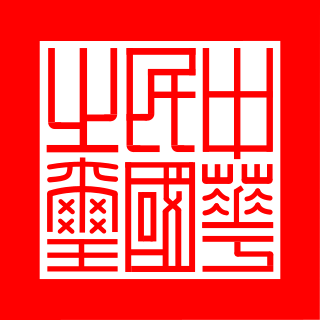 W
WThere are two National Seals of the Republic of China (中華民國國璽), namely the Seal of the Republic of China (中華民國之璽) and the Seal of Honor (榮典之璽). The Seal of the Republic of China is the official seal of the state. The Seal of Honor is used by the head of state in the conferring of honors.
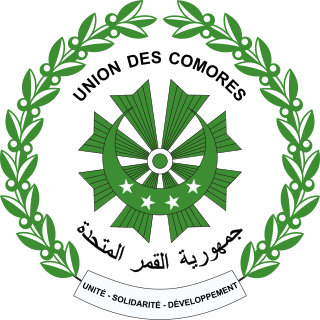 W
WThe national seal of the Comoros has the crescent found on the national flag in the center; within this crescent are the four stars found on the flag. A sun with rays extended is right above the crescent. Around the focal point, the name of the nation is written in both French and Arabic. The border is composed of two olive branches, with the national motto at the bottom in French.
 W
WThe Seal of the Confederate States was used to authenticate certain documents issued by the federal government of the Confederate States. The phrase is used both for the physical seal itself, and more generally for the design impressed upon it. On May 20, 1863, C.S. Secretary of State Judah Benjamin instructed James Mason to arrange for its manufacture in London. The seal was first used publicly in 1864.
 W
WThe Seal of the Federated States of Micronesia resembles the previous seal of the Trust Territory of the Pacific Islands, and reads "Government of the Federated States of Micronesia". The seal had been adopted by the Congress of the Federated States of Micronesia and then accepted by the United States Congress.
 W
WThe Great Seal of France is the official seal of the French Republic. After the 1792 revolution established the First French Republic, the insignia of the monarchy was removed from the seal. Over time, the new seal changed. At first, it featured Marianne, symbol of the revolution. It evolved to show that the people developed their culture and politics. In modern times, it depicts liberty, along with aspects of culture such as art, education, and agriculture.
 W
WThe coat of arms of Germany displays a black eagle with a red beak, a red tongue and red feet on a golden field, which is blazoned: Or, an eagle displayed sable beaked langued and membered gules. This is the Bundesadler, formerly known as Reichsadler. It is one of the oldest coats of arms in the world, and today the oldest national symbol used in Europe.
 W
WThe presidential seal is a seal used by the President of Ireland to authenticate his signature on official documents. The Constitution of Ireland requires certain documents to be issued under the president's "hand and seal", and in other cases the seal is mandated by act of the Oireachtas. It is a single-sided "dry seal" impressed directly onto the fabric of the document, leaving a relief of its design without sealing wax or ink.
 W
WThe Great Seal of the Irish Free State is either of two seals affixed to certain classes of official documents of the Irish Free State :the "internal" Great Seal, used from 1925 for "internal" documents signed by the Governor-General the "external" Great Seal, used from 1932 for diplomatic documents signed by the British king.
 W
WThe Government Seal of Japan, one of the country's national seals, is an emblem (mon) of paulownia used by the Cabinet and the Government of Japan on official documents. It is one of various paulownia mon, collectively known as the Paulownia Seals or the Paulownia Flower Seals .
 W
WThe Imperial Seal of Japan or National Seal of Japan, also called the Chrysanthemum Seal , Chrysanthemum Flower Seal or Imperial chrysanthemum emblem , is one of the national seals and a crest (mon) used by the Emperor of Japan and members of the Imperial Family. It is a contrast to the Paulownia Seal used by the Japanese government.
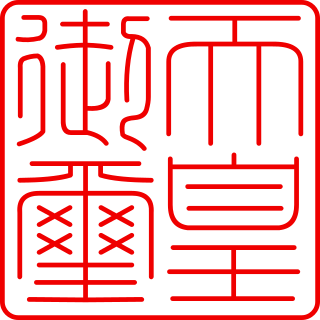 W
WThe Privy Seal of Japan is one of the national seals and is the Emperor of Japan's official seal.
 W
WThe Great Seal of Japan is one of the national seals of Japan and is used as the official seal of state.
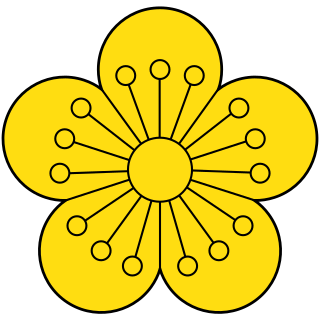 W
WThe Imperial Seal of Korea or Ihwamun was one of the symbols of the Korean Empire. It was originally the emblem of the royal family and was subsequently used for the coat of arms of the short-lived empire. The symbol features a plum flower. Today, the seal is used as a symbol by the families' association of the Jeonju Yi clan, which was the royal family of Joseon dynasty and the imperial family of the Korean Empire.
 W
WThe seal of Madagascar includes an outline map of the island at the center, and below it the head of a zebu. Colors used are red, green, yellow, black, and white. Green and red rays emanate from the map, making it look like the sun and also the Ravenala, a plant typical of Madagascar.
 W
WThe seal of the Marshall Islands consists of a blue background, which represents the sea. On the blue background, there is an angel with outstretched wings symbolizing peace. Behind the angel, there are two islands with an outrigger canoe and a palm tree. On the upper left and right in the shield are a red and white stripe. Behind the shield there is a stylized nautical chart. In the ring above the shield is the phrase Republic of the Marshall Islands, and below, the national motto, Jepilpilin ke Ejukaan.
 W
WThe seal of Mauritania is based on the national flag of Mauritania, which was adopted on 15 August 2017. It contains red, green, and gold emblems. The green symbolizes Islam, the major religion in the nation, the gold represents the sands of the Sahara desert, and the red represents the bloodshed of the people that fought for independence. The crescent and star are also emblems of Islam. The edges read "Islamic Republic of Mauritania" in Arabic and French.
 W
WThe Imperial Seal of the Mongols is a seal (tamgha) that was used by the Mongols. The imperial seals, bearing inscriptions in Mongolian script or other scripts, were used in the Mongol Empire, the Yuan dynasty and the Northern Yuan dynasty, among others.
 W
WThe State Seal of Myanmar is used in all official government documents, including publications.For the honor of the State Seal, there are State Seal Law and Principles for the usages.
 W
WThe National Seal of Brazil is one of Brazil's national symbols, displayed on several official documents, such as graduation diplomas, consular and diplomatic papers, military conscription forms, etc. Most documents, however, feature the National Coat of Arms instead of the National Seal.
 W
WThe seals of the Nguyễn dynasty can refer to a collection of seals specifically made for the emperors of the Nguyễn dynasty, who reigned over Vietnam between the years 1802 and 1945, or to seals produced during this period in Vietnamese history in general.
 W
WThe Seal of the President of the Federal Republic of Nigeria is the official symbol of the Nigerian President. It was first used in 1979 by President Shehu Shagari in the ill-fated second republic, and jettisoned by the successive military regimes from 1983 to 1999. The presidential seal returned to usage in the wake of the fourth republic in 1999, and it has remained in use since.
 W
WThe Seal of Northern Mariana Islands takes its inspiration from the United Nations, as the NMI had once been a UN Trust Territory.
 W
WThe Seal of Palau depicts a traditional meeting center. The executive seal, used by overseas missions and by the nation's president, is also of a similar design.
 W
WThe Seal of the President of the Philippines is a symbol used to represent the history and dignity of the President of the Philippines. Its original form was designed by Captain Galo B. Ocampo, Secretary of the Philippine Heraldry Committee, and patterned after the Seal of the President of the United States. It was first used by President Manuel Roxas in 1947.
 W
WThe Seal of the Vice President of the Philippines is a symbol used to represent the history and dignity of the vice president of the Philippines. Its design was prescribed by Executive Order No. 310 of 2004, and is similar in design to the Seal of the President of the Philippines.
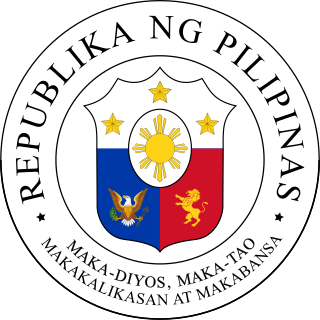 W
WThe Great Seal of the Philippines is used to authenticate official documents of the Philippine government. It may refer to the physical seal itself or the design impressed upon it. Under the law, the President of the Philippines is given the custody to the seal.
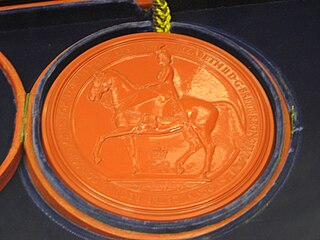 W
WThe Great Seal of the Realm or Great Seal of the United Kingdom is a seal that is used to symbolise the Sovereign's approval of state documents.
 W
WThe seal of Rwanda is the national symbol and used by the government. It was restyled in 2001 to match the color scheme of the new national flag. The text reads "Republic of Rwanda - Unity, Work, Patriotism" in Kinyarwanda. The central tribal devices, a stem of sorghum, a branch of a coffee tree and a traditional basket are surmounted on a cog wheel with the sun with its rays above, while two typical rwandan shields protects them, one on the right and one on the left. They are encircled by a square knot.
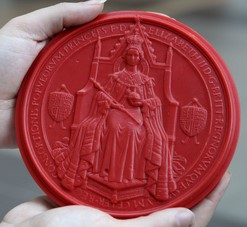 W
WThe Great Seal of Scotland is a principal national symbol of Scotland that allows the monarch to authorise official documents without having to sign each document individually. Wax is melted in a metal mould or matrix and impressed into a wax figure that is attached by cord or ribbon to documents that the monarch wishes to make official. The earliest seal impression, in the Treasury of Durham Cathedral, is believed to be the Great Seal of Duncan II and dates to 1094.
 W
WThe Seal of Niue, or the Public Seal of Niue, is the official seal of Niue. It was created in 1974 when Niue gained self-governing status and joined into free association with New Zealand.
 W
WThe National Seal of the Republic of Korea is a governmental seal used for purposes of state in South Korea. The seal is carved with characters called injang.
 W
WThe Emblem of Sikkim, is currently used as the official seal of the Government of Sikkim, India. It was earlier used as the coat of arms of the House of Namgyal and the Kingdom of Sikkim. The emblem is known as the Kham-sum-wangdu. It was designed in 1877 by Robert Taylor.
 W
WThe Presidential Seal of Turkey is the official seal of the President of Turkey. It has a large 16-pointed Sun which symbolizes the Republic of Turkey in the center, which is surrounded by 16 five-pointed stars, symbolizing the 16 Great Turkic Empires in history. It is the oldest presidential seal in the world still in use.
 W
WThe official seal of the President of Ukraine is ring-shaped. There is an image of the lesser Coat of Arms of Ukraine in the center of the stamp hemmed with “The President of Ukraine” inscription. Below the National Emblem is an image of the Order of Prince Yaroslav the Wise. The handle of the new seal is garnished with a lapis lazuli ball. The neck or central part of the seal is gilded; its colors are that of the national Flag of Ukraine – blue above and yellow below. The seal is made of silver and weighs next to half a kilogram. Kyiv jeweler Mykhailo Cheburakhin made it using sketches by Oleksiy Rudenko just for a week.
 W
WThe Seal of the President of the United States is used to mark correspondence from the president of the United States to the U.S. Congress, and is also used as a symbol of the presidency itself. The central design, based on the Great Seal of the United States, is the official coat of arms of the U.S. presidency and also appears on the presidential flag.
 W
WThe Seal of the Vice President of the United States is used to mark correspondence from the U.S. vice president to other members of government, and is also used as a symbol of the vice presidency. The central design, directly based on the Seal of the President of the United States, is the official coat of arms of the U.S. vice presidency and also appears on the vice presidential flag.
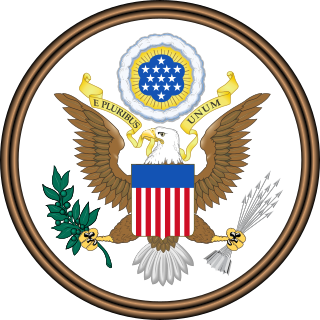 W
WThe Great Seal is a principal national symbol of the United States. The phrase is used both for the physical seal itself, which is kept by the United States Secretary of State, and more generally for the design impressed upon it. The obverse of the Great Seal depicts the national coat of arms of the United States.
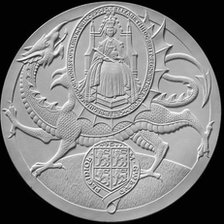 W
WThe Welsh Seal is a seal used for Wales. Provision for a Welsh seal was made in Part 4 of the Government of Wales Act 2006 which also designated the First Minister of Wales as "Keeper of the Welsh Seal". The seal is used by the First Minister to seal letters patent signed by the monarch giving royal assent to bills passed by the Senedd in order for those bills to become an Act of Senedd Cymru.